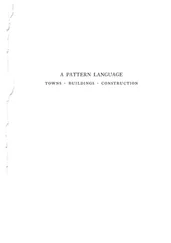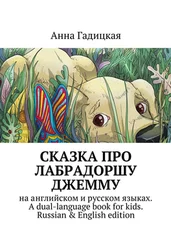Naturally Occurring Conversations
Linguistic anthropologists often record hours and hours of “naturally occurring” conversations in order to study actual utterances produced by speakers in their everyday interactions. Researchers also often record folk tales, political speeches, rituals, songfests, performances, and other speech events. Of course, introducing a tape recorder or video recorder frequently makes the context something other than “naturally occurring,” but linguistic anthropologists are well aware of this and have responded in several ways. First, they have noted that every context is “natural,” and as long as the various aspects of the context are noted and brought into the analysis, some very interesting insights can be obtained. Second, they note that people often lose whatever self-consciousness they might at first feel as they get used to being recorded. Third, some researchers have removed themselves from the immediate conversational context by giving tape recorders to the participants themselves to control, or by setting up video or tape recorders that run for long periods of time without the researcher’s needing to be present. Finally, some researchers have recorded interactions surreptitiously – though this raises ethical issues that will be discussed at greater length below. One way some linguistic anthropologists have attempted to abide by the standards of ethical research is to obtain informed consent ahead of time to record people surreptitiously at some point in the future. Then, once the recording has been made, these researchers play it back for the participants to make sure that they still consent to the recording.
As important as recording naturally occurring conversations can be for many linguistic anthropologists, there are nevertheless several drawbacks to this method. Transcribing such conversations takes an average of six hours of transcription for every hour of conversation – often more. Recorded words can become detached from their social contexts, thereby making the meanings even more indeterminate than usual. And finally, the amount of data that can be analyzed in a single short conversation is enormous, so hundreds of hours of recorded conversations can quickly become overwhelming to analyze. Despite these disadvantages, however, there is an important benefit to recording or videotaping as many interactions as possible: it allows the researcher to study complex, multimodal linguistic practices in greater detail, thereby avoiding the tendency to draw conclusions based on faulty memories, received notions, or one’s own language ideologies.
It is important to remember, however, that transcriptions are never neutral written records of what was said but instead are always selective, theory-laden, and inevitably partial in both senses of the word (cf. Bucholtz 2000, 2011:39–41; Duranti 1997:122ff; Duranti2006a; Ochs 1979). There is no perfect or final transcription of any linguistic interaction. Instead, researchers must choose which features to include, omit, or highlight in their transcripts depending on the focus of their analyses. Should they time pauses in tenths of a second, for example? How, if at all, should they indicate overlapping speech or nonverbal gestures – with brackets of some sort, or by using a format similar to a musical score in which an utterance spoken at the same time as another appears right above or below it? How should they represent sign language (Rosenthal 2009)? What sorts of emphasis or intonation should be included in the transcript, and with what symbols or fonts? How should nonstandard variants be represented – exactly as pronounced using the International Phonetic Alphabet, through standardized spellings of the words that misrepresent the exact spellings but might be easier to read, or some other alternative, such as Gail Jefferson’s system of transcription, which is used by many conversation analysts (Jefferson 2004; Hepburn and Bolden 2013)? How should speech translated from another language be represented in writing? These issues are difficult intellectually, logistically, ethically, and politically, but all linguistic anthropologists who transcribe naturally occurring discourse must grapple with them, and the more explicit they are in their texts about the decisions they made while transcribing, the more illuminating their analyses are likely to be.
Some linguistic anthropologists, especially those interested in cognition and/or child language acquisition/socialization, conduct various experiments in order to be able to hold constant many of the variables in any given situation. For example, a researcher interested in whether different ways of expressing spatial relations in two languages correlate with different ways of perceiving space might set up an experiment that asks subjects to remember the ordering of a line of objects on a table, then to reproduce that ordering after being rotated 180 degrees (Levinson 2003b). Similarly, researchers interested in children’s language acquisition and socialization might conduct an experiment using a skit with dolls in order to ascertain the children’s language abilities and their understandings of others’ intentions (e.g., Villiers and Villiers 2003). We will explore some of the research involving experimental methods in Chapter 5.
A researcher interested in language ideologies might conduct a matched guise test, a process that involves recording individuals as they read a short passage in two or more languages or dialects (“guises”). In other words, if four people are recorded, eight (or more) readings of the same passage might be produced. For example, a researcher interested in whether listeners judge people who speak African American English differently from those who speak standard American English might choose four individuals who can code-switch fluently between these two ways of speaking. Each of these four individuals would record two readings of the same passage, one in African American English, the other in standard American English. These eight readings would then be shuffled up and played back to other people who do not know that there were only four readers instead of eight. The listeners would be asked to rank each of the eight readings, rating each according to how honest, intelligent, sophisticated, likable, and so on, they thought the reader was. By comparing the scores listeners give to the same speaker reading in African American English vs. standard American English, it is possible to hold a person’s other voice qualities constant and thereby determine how much influence simply speaking one or the other of these language variants has on listeners’ attitudes toward the speaker. In other words, matched guise tests can provide a measure of people’s unconscious language ideologies – which can be related to racial prejudices. 6
One research project that used a matched guise test was Matthew Ciscel’s study of linguistic practices in Moldova (part of the former Soviet Union). Ciscel used four readers, each of whom spoke some variation of at least two of the following as either first or second languages: Moldovan, Romanian, Russian, or English. Ciscel found that while the listeners’ attitudes toward these languages were complex, the one clear tendency that came through in the results was that of all the variants the listeners ranked, they considered the rural dialect of mixed Romanian/Moldovan to be lowest in status (2007:100; cf. Bilaniuk 2005; Booth 2009b; Urciuoli 1996). Thus, one of Ciscel’s speakers (whom Ciscel numbers “Voice 2”), for example, recorded the same passage in standard Romanian, Russian, and English and was ranked by the listeners as more honest, intelligent, and so on, when she was speaking in these languages than when she was speaking the rural dialect of mixed Romanian/Moldovan. It must be remembered that the listeners thought that they were hearing four separate speakers, not the same speaker speaking in four different languages or dialects, and in all cases the speakers were reading the same passage. In this way, matched guise tests can help reveal unconscious language ideologies – often a direct or indirect indicator of social hierarchies. While matched guise tests, like all methods, have their limitations, they can be quite useful, especially when combined with participant observation, interviews, and other ethnographic methods.
Читать дальше












